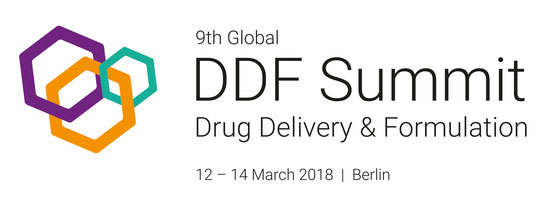- Home
- Blog
- News
- Basics
- Sources
- Agencies, Regulatory & Organisations
- CERSI Excipients Browser
- Excipient Report
- Excipient DMF List
- EXCiPACT Certified Companies
- Excipient Documentation
- Excipient EINECS Numbers
- Excipient E-Numbers
- FDA Inactive Ingredient List
- FDA GRAS Substances (SCOGS) Database
- IPEC Americas
- USP - U.S. Pharmacopeia
- Definitions
- Whitepapers / Publications
- Supplier
- Services
- Media
- Events
- 1st pharmaexcipients Poster Award
- Event Calendar
- Events featured by pharma-excipients
- 4th Annual Formulation & Drug Delivery Congress
- DDF Summit
- ExcipientFest Americas
- ExcipientFest Asia
- Global CompliancePanel
- International Conference and Exhibition on Pharmaceutics & Novel Drug Delivery Systems
- Formulation & Drug Delivery USA Congress
- Laboratory Medicine 2018
- Making Pharmaceuticals Europe
- Making Pharmaceuticals Exhibition
- Pharma Integrates
- PharmaExcipients China @CPhI China
- TTC Technology Training Center
- Jobs
- Online Sourcing
- Contact
06. January 2018
Outsourcing in the bio/pharmaceutical industry had a productive 2017. A flurry of acquisitions, an expansion of biotechnology needs, and a growth in new facilities and services offered were seen. The following are some of the highlights.
31. January 2017
31. January 2017
In this study, solid dispersions (SDs) and electrospinning combined methods were used to increase the bioavailability and solubility of a water insoluble drug. Pullulan (PUL) nanofibers containing rutin-Pluronic SDs (PUL&RU@PF) were fabricated by electrospinning. Rutin was efficiently loaded with Pluronic SDs using a facile mixing method and the prepared SDs indicated that 4% w/v Pluronic concentration provided the optimal drug loading efficiency. Scanning electron microscopy (SEM) verified...
31. January 2017
Abstract The adsorption behavior of some metal ions (Pb, Mn, Mg, Zn and Ca) was studied on silicon dioxide nanoparticles, SiO2 NP, alone and its mixture with microcrystalline cellulose, MCC, powder (1:1) as drug carriers in pharmaceutical preparations. The effect of different conditions as temperature and pH on adsorption was investigated. It was found that upon increasing the temperature, the ability of the adsorbent material increases. The pH of the metal solution has the same effect as...
31. January 2017
Solubility-enhancing amorphous solid dispersions are used in the oral delivery of hydrophobic, crystallizable drugs. Effective solid dispersion excipients enable high supersaturation drug concentrations and limit crystallization of the dissolved drug over extended times. We prepared poly(N-isopropylacrylamide)-based excipients of varying molar mass and with various end group identities, and examined their ability to improve the aqueous solubility of the Biopharmaceutical Class System Class II...
31. January 2017
The aim of this study was to apply the knowledge of surface free energy for the flowability prediction of pharmaceutical excipients. In order to predict the flowability, the spreading coefficient was calculated from the surface free energy of each material using Wu's equation. The resulting spreading coefficient could indicate which material would spread over another in a binary mixture. In this study, the binary mixture consisted of filler (lactose, or dibasic calcium phosphate) and a...
30. January 2017
Abstract Increasing costs in discovering and developing new molecular entities and the continuing debate on limited company pipelines mean that pharmaceutical companies are under significant pressure to maximize the value of approved products. Life cycle management in the context of drug development comprises activities to maximize the effective life of a product. Life cycle approaches can involve new formulations, new routes of delivery, new indications or expansion of the population for whom...
30. January 2017
Abstract: This work is the continuation of a study focused on establishing relations between surface thermodynamic properties and in vitro release mechanisms using a model drug (ampicillin trihydrate), besides analyzing the granulometric properties of new polymeric materials and thus establishing the potential to be used in the pharmaceutical field as modified delivery excipients. To do this, we used copolymeric materials derived from maleic anhydride with decreasing polarity corresponding to...
29. January 2017
ABSTRACT The administration of active compounds by the oral mucosa is an efficient method for the delivery of drugs and nutrients. This work aimed to develop and characterize orally disintegrating films (ODFs) based on starch and gelatin as carriers of vitamin C. The ODFs were produced using a casting technique by varying the concentrations of starch and gelatin (0, 20, 40, 60, 80, and 100 g of starch/100 g of polymer) and were characterized in relation to contact angle, opacity, surface...
29. January 2017
Abstract The self-assembly of short designed peptides into functional nanostructures is becoming a growing interest in a wide range of fields from optoelectronic devices to nanobiotechnology. In the medical field, self-assembled peptides have especially attracted attention with several of its attractive features for applications in drug delivery, tissue regeneration, biological engineering as well as cosmetic industry and also the antibiotics field. We here describe the self-assembly of peptide...

